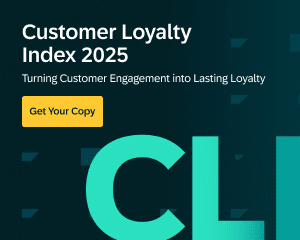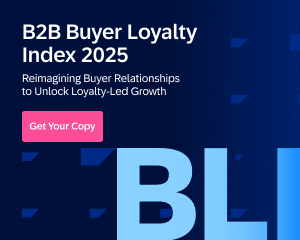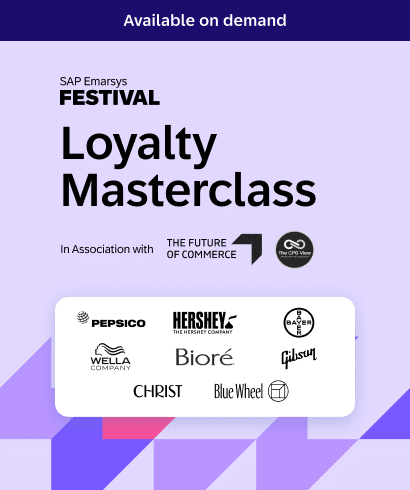WhatsApp stopped being experimental somewhere around 2023. By 2026, it’s simply where your customers are—all 3 billion of them—and where they increasingly expect to interact with brands.
In 2026, WhatsApp has become one of the most powerful channels for brands to connect with customers instantly, personally, and at scale. But with so many brands now in the inbox, simply being on WhatsApp isn’t enough.
To deliver real impact, marketers need automation, the ability to send the right message, to the right customer, at the right time, without manual effort holding them back.
In this article, we’ll explore seven reasons why WhatsApp marketing automation has moved from “nice to have” to non-negotiable for customer engagement success in 2026.
1. Your Customers are Already there, and they Expect You to be, too
If you’re still treating WhatsApp as an “emerging channel,” you’re already behind your customers. With more than 3 billion active users, WhatsApp is now a primary communication tool in most parts of the world, not just a convenient messaging app.
Your customers use it to talk to friends, family, and increasingly, the brands they buy from. They expect instant answers, quick updates, and personal service. When every other part of their digital life happens in real time, waiting hours for an email reply feels outdated.
That shift in mindset has turned WhatsApp from an experimental channel into a baseline expectation. In regions like Europe, Latin America, India, and Southeast Asia, it’s already the default space for brand interactions, covering everything from order updates to loyalty offers. And as usage expands across North America and the UK, it’s becoming the missing link in many brands’ engagement strategies.
With WhatsApp, you show up where your customers already are, in the format they prefer, and at the speed they expect.
2. Engagement Rates That Email and SMS Can’t Touch
If you’ve seen engagement plateau across your existing channels, you’re not alone. Even the most refined email or SMS program faces the same challenge: saturation. Inboxes are crowded, notifications are ignored, and audiences have learned to filter ruthlessly.
WhatsApp cuts through that fatigue not through novelty, but because it feels native to how people already communicate. Messages land directly in an app your customers open dozens of times a day, often within minutes of receiving them.
That’s why WhatsApp messages see open rates of around 98%, compared to roughly 20% for email. Responses happen in minutes, not hours or days. Click-through rates regularly outperform SMS and push notifications, particularly for time-sensitive campaigns like flash sales, cart reminders, or restock alerts.
When your message truly matters, when timing and visibility make the difference between conversion and abandonment, WhatsApp delivers the immediacy other channels can’t.
📦 Pro tip: Timing is everything. Don’t treat WhatsApp like another broadcast channel. Use automation to deliver time-sensitive messages like cart reminders, back-in-stock alerts, or shipping updates within minutes of customer activity. Speed is where WhatsApp shines.
3. It Amplifies Your Other Channels Instead of Replacing Them
Adding WhatsApp to your marketing mix doesn’t mean abandoning what already works. It means enhancing the performance of every channel you already use.
Email remains your cornerstone for storytelling and detail. SMS is fast and direct. But WhatsApp brings something neither can fully match – immediacy combined with conversation. Together, they create a stronger, more connected experience.
Imagine a cart reminder email followed by a quick WhatsApp message that reaches the customer within minutes. Or an order confirmation sent via email, paired with delivery tracking through WhatsApp. For loyalty members, WhatsApp can deliver early access offers or limited drops in a format that feels personal and effortless.
Every customer has their own habits. Some check email in the morning, others live in messaging apps. When your channels work in sync, you meet customers where they are, rather than asking them to adapt to you. That’s the real power of orchestration – using automation to connect every touchpoint so your marketing feels consistent, relevant, and human.
💡 How SAP Emarsys Helps: With SAP Emarsys, you can orchestrate WhatsApp, email, SMS, and push from one platform. Automated journeys let you trigger WhatsApp messages based on behavior, ensuring every channel supports the next — without overlap or manual scheduling.
4. Two-Way Conversations Build Relationships, Not Just Transactions
Your customers don’t want to be talked at. They want to be heard. That’s where WhatsApp stands apart from traditional one-way marketing channels. It turns communication into conversation.
With interactive messages, quick replies, and in-chat buttons, WhatsApp lets you open a dialogue that feels natural and personal. Customers can ask questions, get recommendations, or check an order without leaving the app. And when they do need human help, automation makes the handover seamless, so service feels effortless from start to finish.
This two-way dynamic changes how people perceive your brand. Instead of a company that sends promotions, you become a brand that listens, responds, and remembers. That builds trust, and trust drives loyalty, repeat purchase, and advocacy.
In a world where customers can switch brands with a swipe, relationships matter more than ever. WhatsApp helps you keep them going, one conversation at a time.
🗨️ Pro tip: Blend automation with human touch. Even the best bots can’t replace empathy. Use automation for FAQs and quick responses, but make it easy for customers to connect with a real person when they need to. That balance builds trust faster than any discount.
5. Rich Media Creates Experiences, Not Just Messages
You already know how powerful visuals can be, and the same principle applies here. WhatsApp gives you the chance to create richer, more engaging experiences right inside your customers’ most-used app.
Instead of plain text, you can share images, videos, product cards, and catalogs that bring your brand to life. With room for up to 4,000 characters, you’re not confined to short bursts of copy. You can tell a story, showcase a product, and invite action, all in one place.
Picture this: a new product launch delivered as a WhatsApp message with a quick video demo, a carousel of images, and a “Shop Now” button. It feels personal, immediate, and effortless. And because your audience already knows the format, they’re far more likely to engage.
Rich media gives you the chance to show, not just tell. It transforms WhatsApp from a communication tool into a space where your brand can inspire action and build connection, all in a single message.
⚙️How SAP Emarsys Helps: Emarsys makes it simple to personalize rich media templates using your customer data, from past purchases to loyalty tier. You can send videos, catalogs, and carousels that adapt to each recipient, all while staying on-brand and compliant.
6. Customers Get What They Need in One Message, Not Ten
You’ve probably seen it happen: a simple customer query turns into a long email thread or multiple back-and-forth messages. It’s frustrating for them and inefficient for your team. WhatsApp automation changes that dynamic completely.
With keyword triggers and pre-built responses, you can give customers what they need instantly, from tracking details and loyalty balances to product availability or FAQs. They don’t have to wait, repeat information, or switch channels. And if a conversation does need a human touch, you can hand it over seamlessly without losing context.
This kind of instant, self-service experience saves time on both sides. Customers feel looked after, and your support team can focus on higher-value interactions that build stronger relationships.
In the end, it’s about removing friction. WhatsApp helps you deliver fast, useful, and personal experiences in the space your customers already trust, so every interaction feels smooth, not stressful.
7. Automation Scales Personalization Without Scaling Headcount
Personalization used to mean more manual work. More segments, more rules, more campaign versions to manage. But WhatsApp automation lets you deliver truly individual experiences without adding hours to your day or headcount to your team.
You can trigger messages in real time based on behaviors like cart abandonment, repeat purchases, upcoming birthdays or even loyalty milestones. Each message can pull from your existing customer data to include the right name, product, or recommendation automatically.
Templates help you stay consistent with your brand voice, while built-in consent and frequency controls keep your outreach compliant and respectful. The result is personalization at scale: every customer feels seen and valued, while your team stays focused on strategy, not admin.
WhatsApp automation gives you more time to focus on the ideas and creative thinking that drive growth, while technology takes care of the delivery behind the scenes.
Pro tip: Automate with intention. The goal isn’t to automate everything, but to automate what matters. Focus on the moments that strengthen relationships, like thank-you messages, milestone rewards, or re-engagement offers, and let Emarsys handle the heavy lifting.
The Bottom Line
WhatsApp isn’t an emerging channel anymore. It’s here to stay. It’s where billions of customers already spend their time and where they expect brands to meet them. By automating your WhatsApp marketing, you’re working towards that, building faster, smarter, more personal connections at scale.
If you’re ready to move beyond experimentation and make WhatsApp a core part of your customer engagement strategy, SAP Emarsys can help you get there with the automation, personalization, and AI insights you need to make every conversation count.







